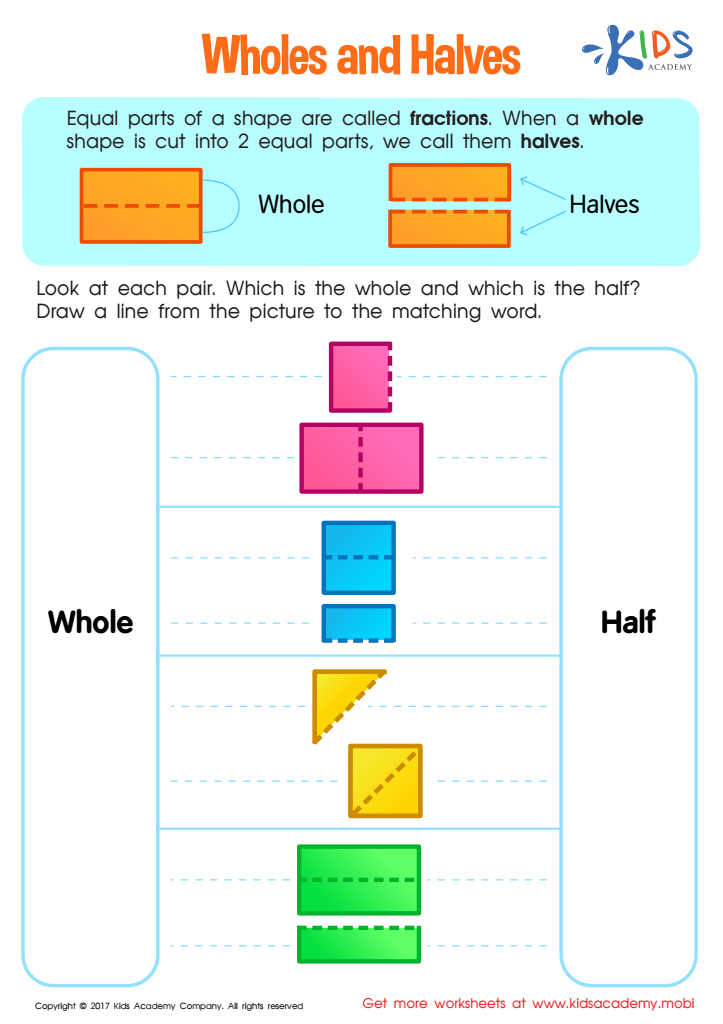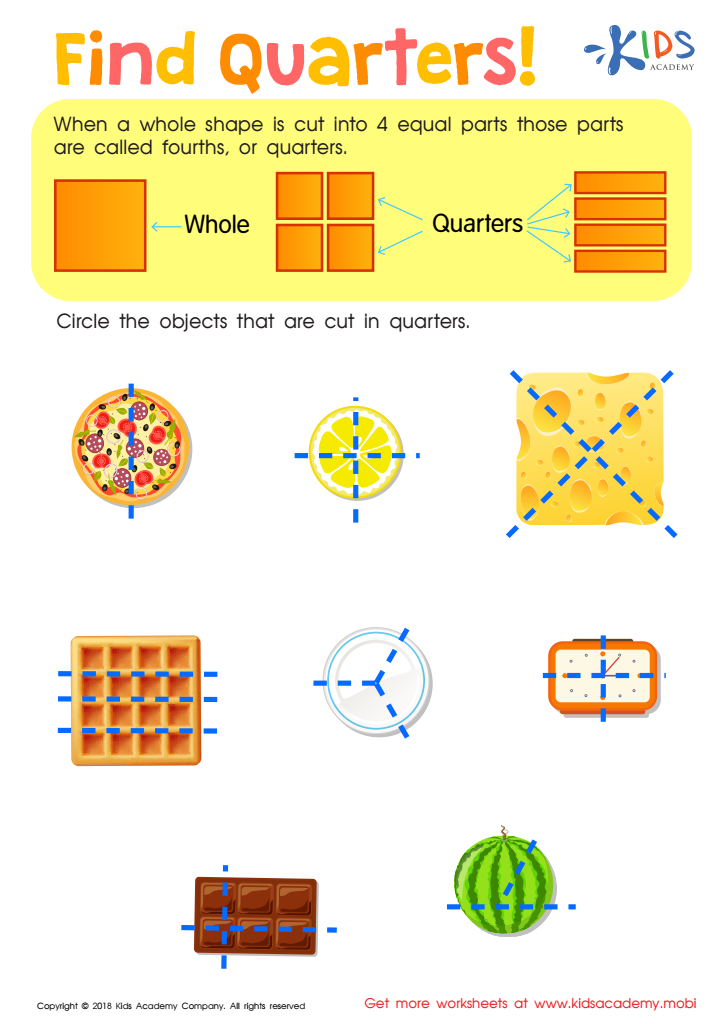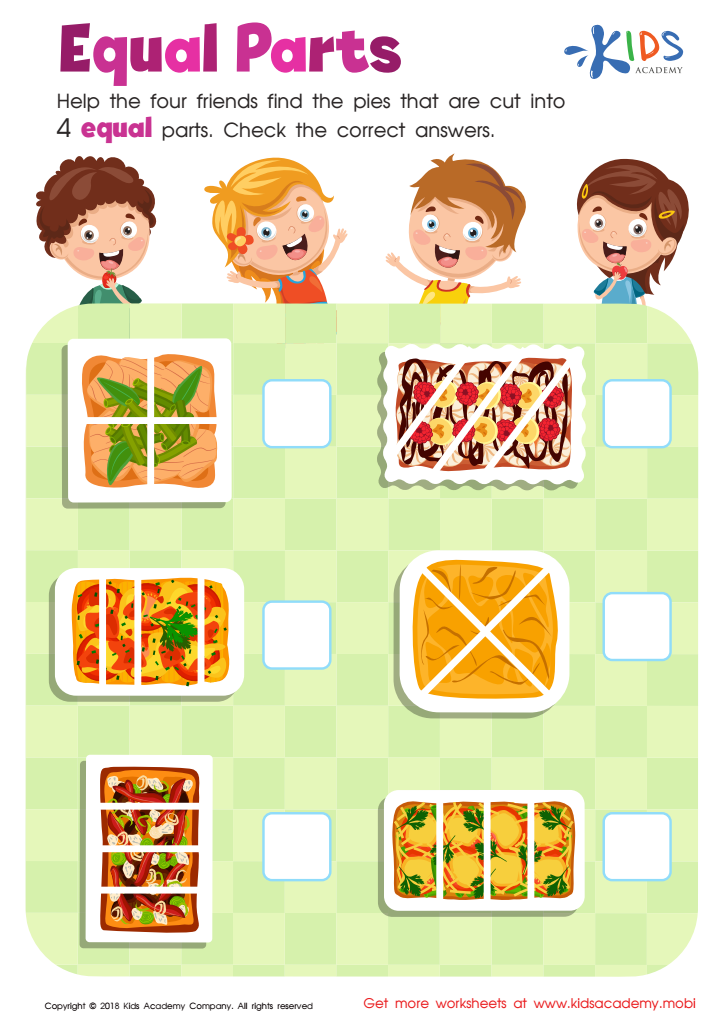Understanding fractions Normal Geometry Worksheets for Ages 3-6
3 filtered results
-
From - To
Explore our "Understanding Fractions" worksheets designed specifically for children ages 3-6! These engaging and interactive materials introduce young learners to the fundamental concepts of fractions through colorful visuals and straightforward exercises. With a focus on normal geometry, kids will enjoy hands-on activities that make learning about fractions fun and accessible. Our worksheets encourage collaboration and exploration, helping little ones grasp essential math skills while developing problem-solving abilities. Perfect for home or school use, these resources support early childhood education with guided instruction and playful practice. Start your child’s journey into the world of fractions today!


Wholes and Halves Worksheet


Find Quarters Worksheet


Equal Parts: Food Worksheet
Understanding fractions and basic geometry at an early age is crucial for children's cognitive development. For children aged 3-6, these concepts not only lay the groundwork for future math skills but also foster critical thinking, problem-solving, and spatial awareness.
When parents or teachers prioritize learning about fractions, children begin to grasp the idea of parts of a whole, which enhances their ability to compare sizes, understand sharing, and recognize relationships between objects. For example, identifying halves and quarters during snack time can help children internalize these concepts through real-life experience.
Similarly, exposure to basic geometry helps children learn shapes, sizes, and spatial relationships, skills vital for everyday tasks and higher-level math in later years. Recognizing shapes like rectangles, circles, or triangles, and understanding their properties strengthens their visual-spatial skills, which are essential in subjects like art, science, and advanced mathematics.
Ultimately, nurturing these foundational concepts fosters a positive attitude toward math, builds confidence, and prepares young learners for more abstract thinking as they progress in their education. Parents and teachers play a pivotal role in this development by integrating fun and engaging methods to instill a love for math and learning.
 Assign to My Students
Assign to My Students































